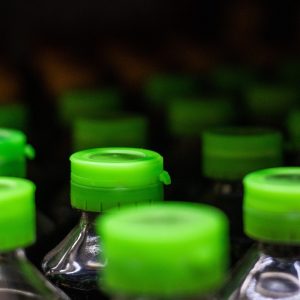When it comes to plastic moulded products, two main moulding methods are often discussed, plastic injection moulding and vacuum moulding. But what is the difference between plastic injection moulding and vacuum moulding? We go into the differences between the two plastic moulding types and more.

What is Plastic Injection Moulding?
Plastic injection moulding is the process of injecting molten plastic into a pre-designed mould in order to create a plastic moulded product. By injecting molten plastic into a mould at high pressure, the plastic is forced to fill the gaps in the mould and create the shape of the mould design. Once the plastic has cooled, the mould is opened and the plastic injected products are removed from the moulding machine.
What Type of Products Are Made From Plastic Injection Moulding?
Plastic injected products can be found everywhere in the home and beyond. Plastic injection moulding is often used to produce items such as recycling bins, medical tools, car parts, toys and more with the ability to highly customise the plastic mould meaning that a wide range of intricate designs can be produced in numerous quantities.
What is Vacuum Moulding?
Vacuum moulding, also known as thermoforming, is a process during which a heated sheet of plastic is stretched over a vacuum forming tool in order to form a plastic part. The thermoforming plastic sheet forms the shape of the mould through a vacuum process and as the sheet cools it forms a hard shape before the moulding tool is removed.
Here’s how the thermoforming process works:
- Preparation – A flat sheet of thermoforming plastic is clamped into a frame. The type of plastic chosen depends on the specific requirements of the part being produced.
- Heating – The sheet is then heated until it becomes soft and pliable. The temperature and heating time vary depending on the material’s thickness and type.
- Moulding – After the thermoplastic sheet is heated to the desired temperature, it is quickly moved to the mould or tool.
- Thermoforming – Once the heated sheet is in position over the vacuum-forming tool, a vacuum is applied beneath the mould, which suctions the plastic sheet tightly against the mould’s surface. This forms the plastic into the shape of the mould. Any excess material is trimmed away.
- Cooling and Release – After the plastic has taken the shape of the mould, it is cooled. Once it has cooled and solidified, the vacuum is released and the formed plastic part can be removed from the mould.
What Type of Products Are Made From Vacuum Moulding?
Depending on the design of the plastic moulding, vacuum moulding can create a variety of designs and styles. Items such as plastic bathtubs, garden equipment and plastic utensils can be made using the vacuum moulding process.
Plastic Injection Moulding Vs Vacuum Moulding, Which is Best?
When it comes to plastic formed products, each technique is different. For tight tolerances, plastic injection moulding is often more suitable than vacuum forming whilst the plastic injection process can also often work out as cheaper than the vacuum moulding process, particularly for larger projects where a high volume of plastic injected products need to be formed. The process of vacuum forming is sometimes also less controlled than plastic injection moulding die to the heated plastic being stretched over a mould.
What are the Advantages of Injection Moulding Compared to Vacuum Moulding?
There are a few advantages to using plastic injection moulding when compared to vacuum moulding.
High precision and tight tolerances – Plastic injection moulding allows for the production of parts with extremely tight tolerances and high precision. This process is capable of producing complex, intricate parts with consistent wall thickness, intricate details and minimal variations. In contrast, vacuum forming may have some limitations in achieving the same level of precision due to the stretching of the heated plastic sheet over the mould.
Higher production volumes – Injection moulding is better suited to high-volume production runs when compared to vacuum moulding. The cycle times in injection moulding are typically faster than vacuum forming, and the process can produce a large number of parts in a shorter period of time. This efficiency makes it more cost-effective for long production runs
Material selection – Plastic injection moulding allows for the use of a range of thermoplastic materials including high-performance engineering plastics like Acrylonitrile Butadiene Styrene (ABS), Nylon (PA) and Polycarbonate (PC). This means that injection-moulded parts can have superior properties such as heat resistance, greater strength, chemical resistance and more. Injection moulding is often chosen when the application demands specific material characteristics and performance.
Plastic Injection Moulding Specialists
As plastic injection moulding specialists, we offer a wide range of plastic injection moulding services to help bring your project to life. We have a number of years experience and have faced every challenge there is in terms of plastic injection moulds so are perfectly placed to answer any questions you may have.
Contact our team now on 01902 758282 to find out more about the range of plastic injection moulding services and related services we offer and talk to our specialists.

